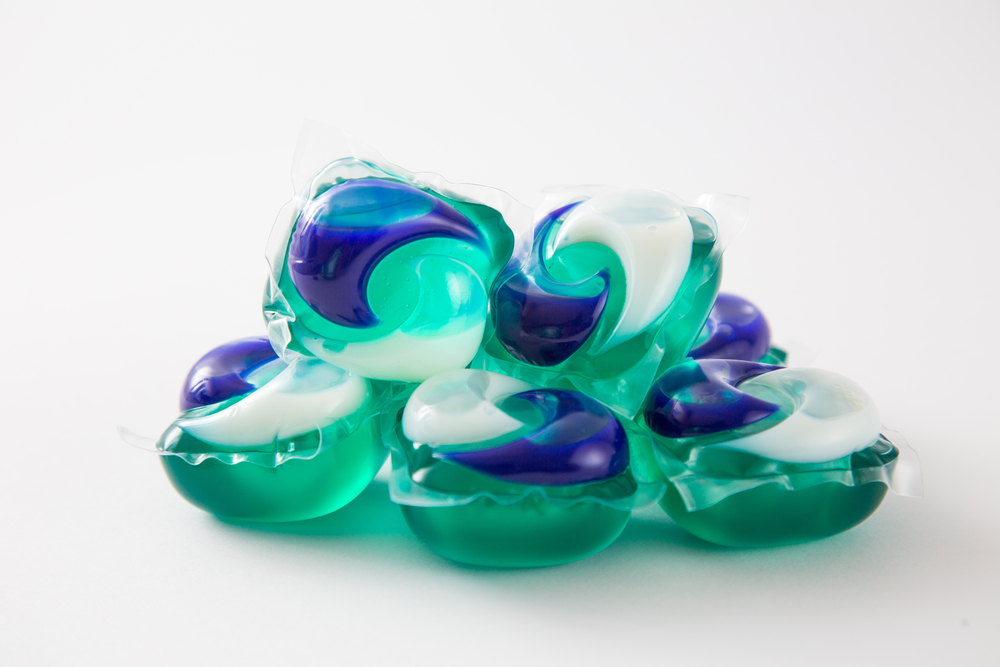Laundry Pods and Kids: Eye Injuries on the Rise

This story was updated at 4:35 p.m.
Laundry pods filled with detergent are a growing source of eye injuries in young kids, a new study finds.
Eye injuries from the laundry pods sent 480 kids to the emergency room in 2015, up from 12 emergency room visits for kids in 2012, according to the study, which was published today (Feb. 2) in the journal JAMA Ophthalmology.
"The role of laundry detergent pods in eye injuries among preschool-aged children is growing," the authors, led by Dr. R. Sterling Haring, a physician and health policy researcher at the Johns Hopkins Bloomberg School of Public Health, wrote in the study. [9 Weird Ways Kids Can Get Hurt]
Eye injuries — specifically, chemical burns — can occur when a child is playing with a laundry pod and the contents squirt into one or both eyes, or if the contents leak onto a child's hand and he or she touches his or her eye, according to the study.
In the study, the researchers used data from 2010 to 2015 from the National Electronic Injury Surveillance System, a database that tracks emergency room visits for injuries caused by consumer products. The researchers focused on kids ages 3 and 4, noting that children younger than 3 were unlikely to be strong enough to break open one of the pods.
From 2012 to 2015, more than 1,200 preschoolers went to the emergency room for an eye injury that was caused by a laundry pod, the researchers found. (There were no instances in 2010 and 2011.)
Get the world’s most fascinating discoveries delivered straight to your inbox.
In 2012, laundry-pod eye injuries accounted for less than 1 percent of all chemical eye burns for this age group, but by 2015, they accounted for 26 percent of such eye burns, according to the study.
For the five years studied, the rates of eye injuries from laundry pods was roughly equal among boys and girls: Boys accounted for 54 percent of the injuries and girls accounted for 46 percent, the researchers found. More than 1,000 of the injuries occurred at home.
The researchers noted that the study only includes information on eye injuries that led to emergency room visits, and therefore left out other possibilities, such as visits to family doctors and urgent-care centers.
In addition to eye injuries, laundry pods have been implicated in causing harm to kids in another way: A 2014 study found that thousands of kids swallowed the pods each year, which cause can vomiting, coughing, choking and drowsiness.
To prevent kids from injuring themselves with laundry pods, the objects should be stored out of children's reach, the researchers wrote. In addition, manufacturers should consider "redesigning the packaging to reduce the attractiveness of these products to young children and improving their strength and durability" so that if kids do get ahold of them, they are less likely to break them, the researchers wrote.
The American Cleaning Institute, a trade association for cleaning product manufacturers, responded to the research, saying, in part: "Data analyzed in the research letter examined accidents prior to the issuance of a voluntary safety standard for liquid laundry packets."
Changes to the packets included strengthening them so they could withstand the squeezing pressure of a child, including a bitter-tasting substance on the outside and making the packaging contain the laundry packets more difficult for a child to open, according to the statement.
"[B]y the end of 2016, more than 99 percent of the volume of liquid laundry packets being shipped to retailers were in compliance with the ASTM standard," the statement said. ASTM, or the American Society for Testing Materials, is an international group that develops standards for product.
Editor's Note: This article was updated to include a statement from the American Cleaning Institute.
Originally published on Live Science.




